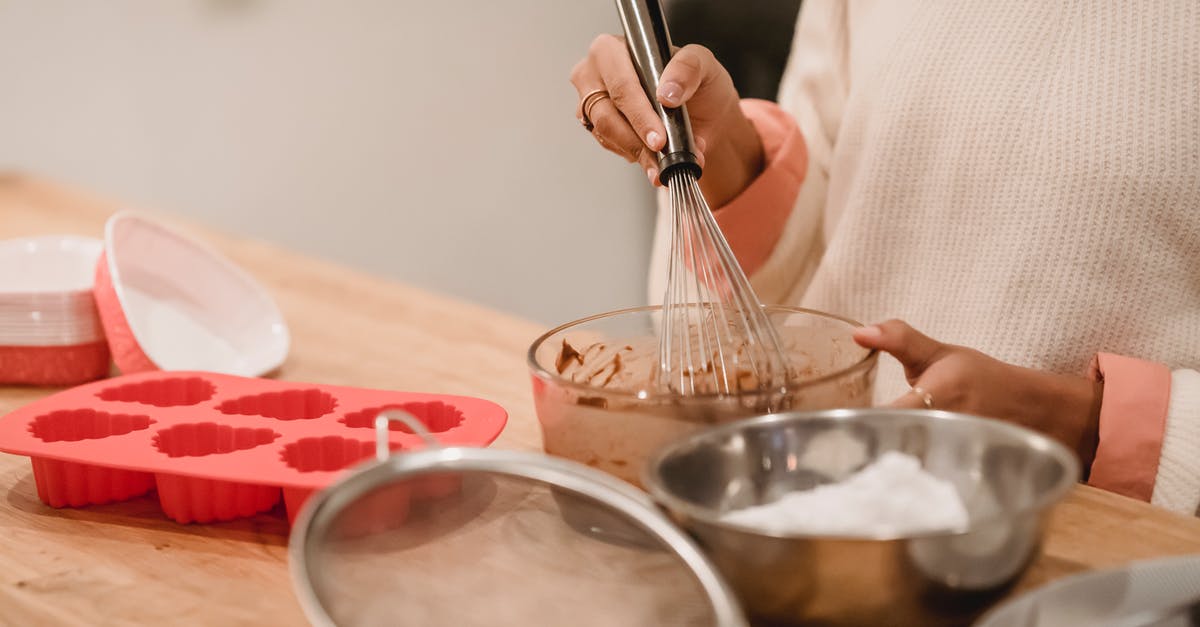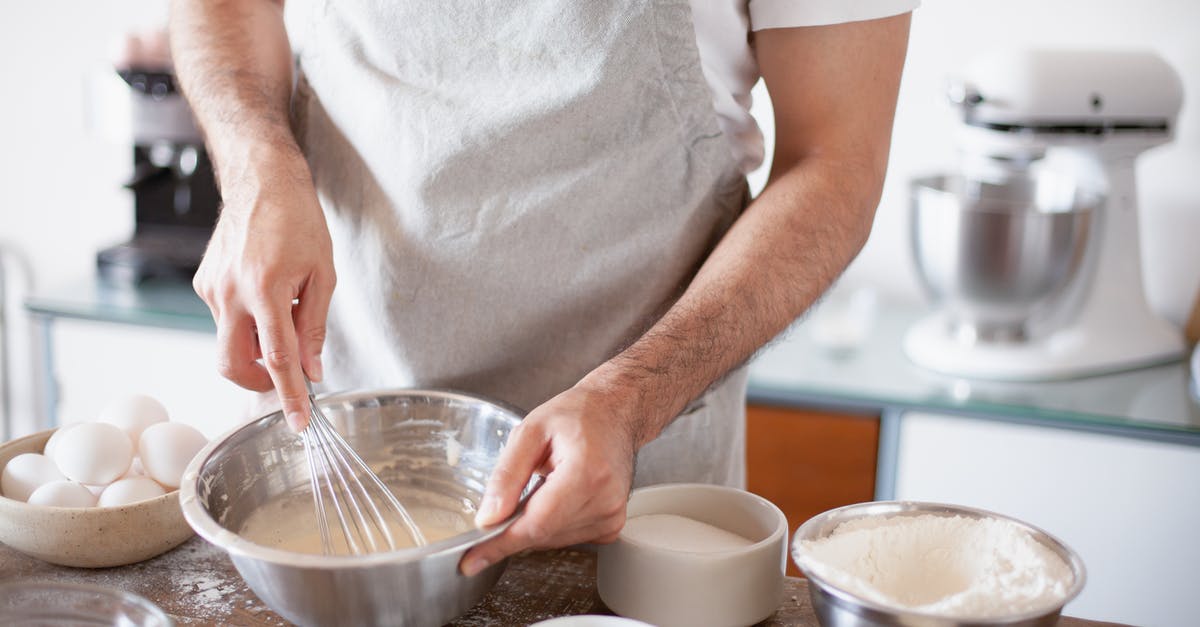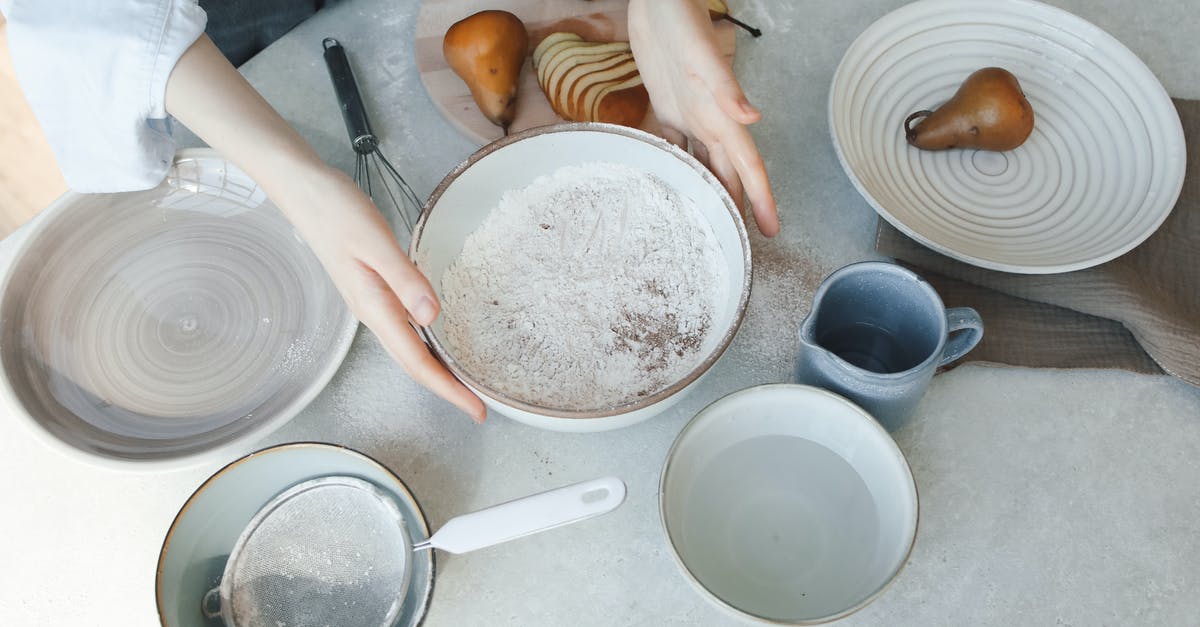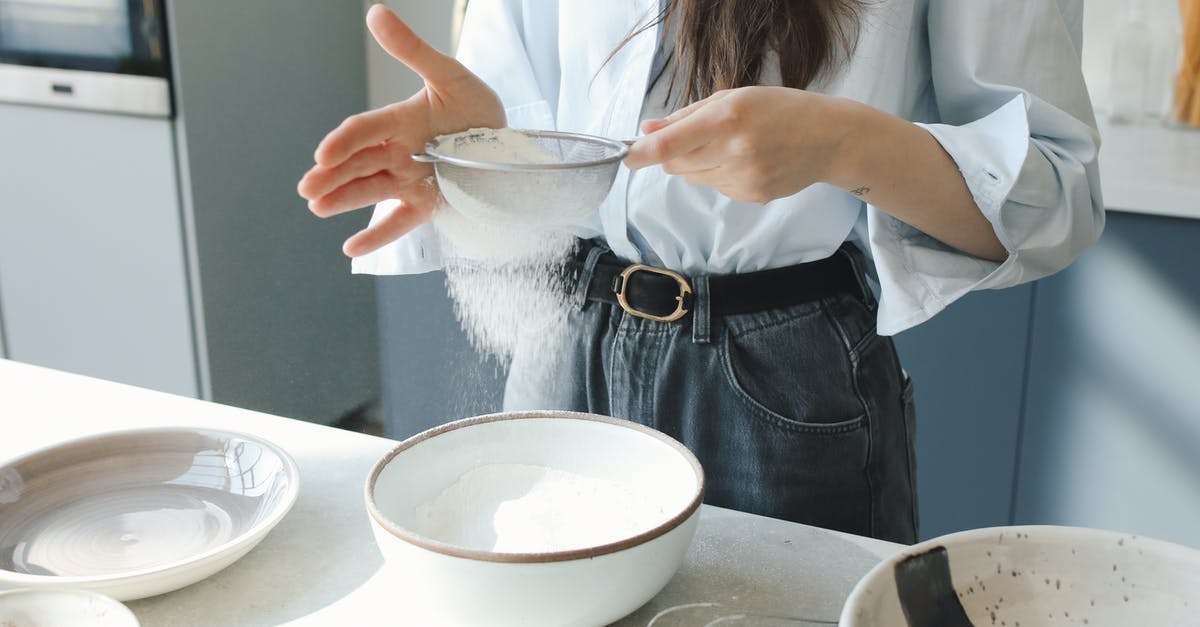what happens when one mixes flour into batter?

I have been mixing quite a bit of batter lately for various recipes, and I continue to see the same behaviour:
- The flour clumps together as soon as it hits the fluid (beit milk, water, or anything else); using a sieve to sift the flour doesn't seem to matter;
- Mixing longer does not make the clumps dissolve;
- Adding more flour up to a critical amount while mixing will, all of a sudden, cause the clumps to grind apart and dissolve, mixing with the fluid, and create smooth batter.
This has led me to imagining that it's the grinding of the flour particles against each other that causes the smoothing of the batter, more than anything else, and that the mixing helps that effect.
Is this hypothesis correct? Or is there something else going on, that I missed?
Best Answer
Many, many things happen when flour flour is mixed into batter. From your description, though, it sounds like you are interested in what leads to and relieves clumping.
When water (whether it is just plain water, in milk, in juice, or whatever) and flour are mixed, the water will begin to expand and penetrate the starch granules in the flour. The starch will swell, and become sticky.
Now, imagine a small clump of flour, with water penetrating from the outside. The outside surface of the flour clump will swell up as the starches become staturated with water. They are also sticky, so they tend to not separate--the surface sticky flour tends to stick to its neighbors and the flour on the inside.
Once the outside surface of the clump is saturated with water, it is very hard for more water to penetrate the clump, so it tends to persist.
The main way to mitigate this clumping is to stir vigorously, immediately upon introducing the flour and liquid. This will tend to distribute the flour particles throughout the liquid before significant swelling occurs. This is why when making a flour slurry, you whisk or beat it quite briskly right away.
Additionally, slowly over time, water will also penetrate the clumps, slowly swelling and hydrating the starches in the center, but then you tend to have quite sticky lumps, like in lumpy gravy, and those are nearly impossible to dissolve, so you don't want that to happen. Immediate agitation is the key.
In the batter you describe, it is probably the additional mixing more than the the additional flour that relieves the clumping. You have said that it doesn't happen until the flour is added, but it may be that the additional volume just makes your mixer more efficient since it has more to work with.
Still, nothing is simple. If you have a lot of water, and a little flour, stirring easily creates a slurry without lumps.
If you have a much larger ratio of flour to water, there isn't enough water to make a liquid phase, and so you get clumps. Within limits, over time, the water will distribute itself throughout the flour phase, and you will get a continuous mass of dough. This is what happens (ignoring the effects of shortening for flakiness) in a pie dough, for example, which is quite dry. It needs the resting time for the water to hydrolyze the starches, and spread evenly throughout, so what you have is one moderately hydrated clump, as it were.
This is only a the tip of the iceberg of complexity that is just flour and water. The ratio, the temperature, the type of flour, the way it is treated all matter.
The interaction of starch and water is only one important interaction.
Another very important and complex interaction is the formation of glutin (a strong, stretchy protein that forms the primary structure in yeast-raised breads, among may other things) over time in the presence of water, and with agitation (as in kneading bread).
Pictures about "what happens when one mixes flour into batter?"



Quick Answer about "what happens when one mixes flour into batter?"
The second problem revolves around gluten development: Mixing flour with liquids activates the gluten proteins that give baked goods their structure. Over-mixing, therefore, can lead to cookies, cakes, muffins, pancakes, and breads that are tough, gummy, or unpleasantly chewy.Can you mix batter and flour?
Mix only until the ingredients are combined. You shouldn't see any flour or dry ingredients resting on top of the batter or on the sides of the bowl. The alternating method ensures flour is mixed thoroughly, but helps prevent you from over-mixing the batter.What happened to the mixture after adding more flour?
Adding more flour up to a critical amount while mixing will, all of a sudden, cause the clumps to grind apart and dissolve, mixing with the fluid, and create smooth batter.What can happen when a batter mixture over mixed?
Dough can get aerated, which means too much air can be incorporated into mixtures. Mixing goods for an extended period of time can also result in extra gluten development; which means that overmixing will give you cakes, cookies, muffins, pancakes, and breads which are gummy or unpleasantly chewy.Should you keep mixing after all of the flour is mixed into the batter?
So when a recipe warns you not to over mix the dough or batter, you typically want to stir the ingredients just until they are combined. For example, if stirring flour into a cookie batter, stop stirring as soon as all of the flour has been incorporated and no dry flour remains.Incorporating Flour into Batter - CHOW Tip
More answers regarding what happens when one mixes flour into batter?
Answer 2
Assuming you are making what I'd know as batter (for pancakes, waffles, yorkshire puddings, or batter for deep-frying): Don't add flour to batter..... it goes lumpy due to the reasons @SAJ14SAJ has stated; you should be starting with flour and making batter. If you need to add extra flour to thicken batter I'll address that at the end.
To make lump free batter: Sift the flour into a big bowl, make a dip in the flour in the center of the bowl. Add any eggs first one at a time. Crack the egg into the center of the dip start mixing slowly just moving the egg around so small bits of flour dissolve in it to a paste when it gets really thick add the next egg. Once all the eggs are added you may have only combined half the flour and you'll have a thin paste in the middle of flour.
Start adding the rest of the liquid a tiny bit at a time still working your way out to bring the flour into the paste until all the flour is combined. Once this has happened continue adding the liquid to thin the paste to a batter.
If you have batter and need to add more flour to thicken it; put the flour in a cup or small bowl add a tiny bit of batter to make the thin paste add a bit more batter to thin the paste further, keep adding slowly until you have a lump free thick liquid then stir this into the main body of the batter.
Sources: Stack Exchange - This article follows the attribution requirements of Stack Exchange and is licensed under CC BY-SA 3.0.
Images: Andres Ayrton, Los Muertos Crew, Polina Tankilevitch, Polina Tankilevitch
